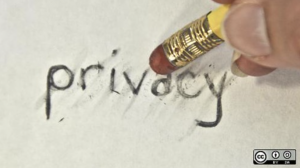
Beiyang Lu, Wed 1-3 pm(Ayesha), group 6
Introduction

“Social Media Marketing Mix”, by Blogtrepreneur, licensed under the Creative Commons Attribution-Share Alike 4.0 International license.
With the development of social media, platforms gradually dominate individuals’ life. Twitter, Facebook, Amazon can be seen everywhere. The rapid rise of major platforms and a monopoly on the market have caused public outrage and led to a techlash. To change this situation, media must have a high degree of organizational transparency. A regulatory system is also an essential part of the process. Government, platforms and social organizations should work together to create a harmonious media atmosphere.
In 2018, major social media companies caused a “techlash” in the United States. Facebook, Twitter, Google, and Amazon have come under collective scrutiny from the media and the U.S. government because their business actions involve monopolizing the market and violating user privacy (Hemphill, 2018). Both the public and the government are dissatisfied with the growing full force of large technology companies. Techlash has also raised public concerns about media capitalism. The public finds that traditional media regulation no longer applies to these new media and that society needs to create new regulations to govern the rights of the platforms (Flew, Martin&Suzor, 2019).
Concerns about techlash
- Information monopolise
In the 21st century, capitalism no longer accumulates labour, but data. With the rapid growth of technology companies, resources are quickly carved up by a small number of monopolistic platforms. Technology companies rely on digital communication for all aspects, so major platforms monopolized data and information to ensure that their interests were maximized. The more users a platform has the more powerful it becomes, and the network effect means that early advantages solidify into permanent industry leadership (Srnicek, 2016). In such a cycle, big platforms such as Google, Facebook, and Uber depend on their capital to keep other competitors out. Data stated that in 2016, Facebook, Google and Alibaba accounted for half of the global digital advertising (Srnicek, 2016). These platforms monopolize resources, and no other company can compete with them.
- Invasion of user privacy
While media brings convenience to users, it also brings the threat of users. In 2013 Snowden revealed the most significant wiretapping incident in human history. Major technology companies such as Microsoft, Apple, Google, and Facebook were cited for wiretapping and violating user privacy (Smyrnaios, 2019). They betrayed the trust of users and sold their data to third-party advertisers for profit. Users feel like they are living under the surveillance of social platforms. Although all information uploaded on public platforms such as social media is free and open. However, before using this information for any other purpose, the platform must seek the user’s consent. Google uses personal data without the user’s consent, which is an unethical invasion of privacy.

“Facebook: The privacy saga continues”, by Ruth Suehle for opensource.com, licensed under the Creative Commons Attribution-Share Alike 4.0 International license.
- Surveillance capitalism and filter bubble
When users search for a product on google and then open amazon, they will be surprised to find that the product appears on the recommendation page. This is because the user’s data is being monitored, and the role of monitoring is not only to erode privacy but to redistribute them (Zuboff, 2015). The platform monitors what users view online and recommends related advertisements to users. The platform monitors the content that users view online and recommends these product-related ads to users. Pariser came up with the “filter bubble” (Pariser, 2011), where the media monitors every piece of content that users like. Then the algorithm filters out the same content. In order to keep users on the products they like, the algorithm caters to their preferences and only recommends content that “you might like.” Over time, content with different values from the user will be excluded, and the user will only see the content manipulated by big data. Surveillance capitalism violates not only privacy but also manipulator user’s mind.
In response to these concerns, the community and technology companies are aware that the online environment needs to be regulated and have taken action. Facebook released a statement <Facebook Community Standards> in 2021. This statement is committed to maintaining an excellent online environment and will protect user privacy and information. The U.S. government also proposed creating a new federal agency to regulate digital platforms (Wheeler, 2021). Government, civil society organizations and technology companies, can address concerns about techlash to varying degrees.
Approaches to regulating platforms
- Self-regulation
First, consider the self-regulation of technology companies. For companies, self-regulation can be more efficient and achieve the social responsibility that companies should take. Self-regulation can best protect the freedom of the platform than strict censorship. The first step of self-regulation is to establish a platform guideline to respect and protect users’ speech and privacy and attract advertisers with an excellent online environment. Moreover, technology companies can use a guideline to assure legislators that no further legal regulation is needed (Gillespie, 2018). Easy and casual guidelines are more acceptable than a severe legal system.
However, self-regulation has also been questioned for not being fair enough. The primary motivation of platforms and companies is to achieve their interests through business development and expansion, and public value is not the first consideration of platforms. If there is a lack of social responsibility, it is difficult for platforms to ensure the fairness of their self-regulation. Because there is no incentive for a self-regulatory system, the enforcement of the platform is vulnerable to public suspicion. For example, for the sake of profit, platforms will acquiesce to some illegal practices. In contrast, the public and the government have no right to view the platform data, which leads to loopholes in regulation.
- Government regulation
Government regulation will be more enforceable than self-regulation by tech companies, and there is a well-established system of external oversight to put specific industry rules in place by law to make regulation more effective. For example, the General Data Protection Regulation, or GDPR, issued by the E.U. government, is a set of rules that are already starting to change how some social media companies do business. The promotion of GDPR is seen as a giant step forward in protecting individual rights in the digital age. The ACMA (Australia Communications and Media Authority) regulates media to maintain a harmonious network environment in Australia.
It is undoubtedly true that government regulation is not a perfect solution. Strict government regulation may reduce the freedom of the platform and thus affect the user experience. Another reason is that establishing laws is a long process. The process of making rules, monitoring, and implementing takes too much time. Additionally, the efficiency of government regulation may not keep up with the speed of technological innovation. GDPR, the most successful government regulatory system nowadays, also has its drawbacks. GDPR is not a law in countries other than the E.U. It is unlikely that the E.U. will want to take the risk of working with companies in the U.S. or anywhere else, which would put them at risk. Consequently, rules set by governments are difficult to apply across nations.
- Community regulation
Associations are made up of citizens because they are users of social platforms and have the right to voice their demands and regulate them. Citizen participation can promote public opinion in favour of regulation, make the public aware of the importance of regulation, and raise citizens’ awareness to protect their rights. However, as the public spontaneously formed groups lack regulatory power, citizens can not directly communicate with the platform, the actual implementation of management or the need for government and technology companies.
Conclusion
Under the impact of techlash, society has realized that social platforms need to be regulated. However, the power of one party alone is not enough. The public, government and tech companies should join hands to solve the problem and build a better social media environment.
References
Calder, A. (2020). EU GDPR – an International Guide to Compliance. I.T. Governance Ltd.
Flew, T., Martin, F., & Suzor, N. (2019). Internet regulation as media policy: Rethinking the question of digital communication platform governance. Journal of Digital Media & Policy, 10(1), 33–50. https://doi.org/10.1386/jdmp.10.1.33_1
Gillespie, T. (2018). Custodians of the Internet: Platforms, Content Moderation, and the Hidden Decisions That Shape Social Media. New Haven: Yale University Press. https://doi-org.ezproxy.library.sydney.edu.au/10.12987/9780300235029
Hemphill, T. A. (2019). “Techlash,” responsible innovation, and the self-regulatory organization. Journal of Responsible Innovation, 6(2), 240–247. https://doi.org/10.1080/23299460.2019.1602817
Pariser, E. (2011). The filter bubble: what the Internet is hiding from you. Viking.
Smyrnaios, N. (2019). Google as an Information Monopoly. Contemporary French and Francophone Studies, 23(4), 442-446.
https://doi.org/10.1080/17409292.2019.1718980
Srnicek, N. (2016). Platform capitalism. ProQuest Ebook Central https://ebookcentral-proquest-com.ezproxy.library.sydney.edu.au
Wheeler, t. (2021). An Ambitious Plan to Regulate Tech Platforms Like Facebook. Time. Retrieved 8 October 2021, from https://time.com/5952630/facebook-regulation-agency/.
Zuboff, S. (2015). Big other: Surveillance Capitalism and the Prospects of an Information Civilization. Journal of Information Technology, 30(1), 75–89. https://doi.org/10.1057/jit.2015.5